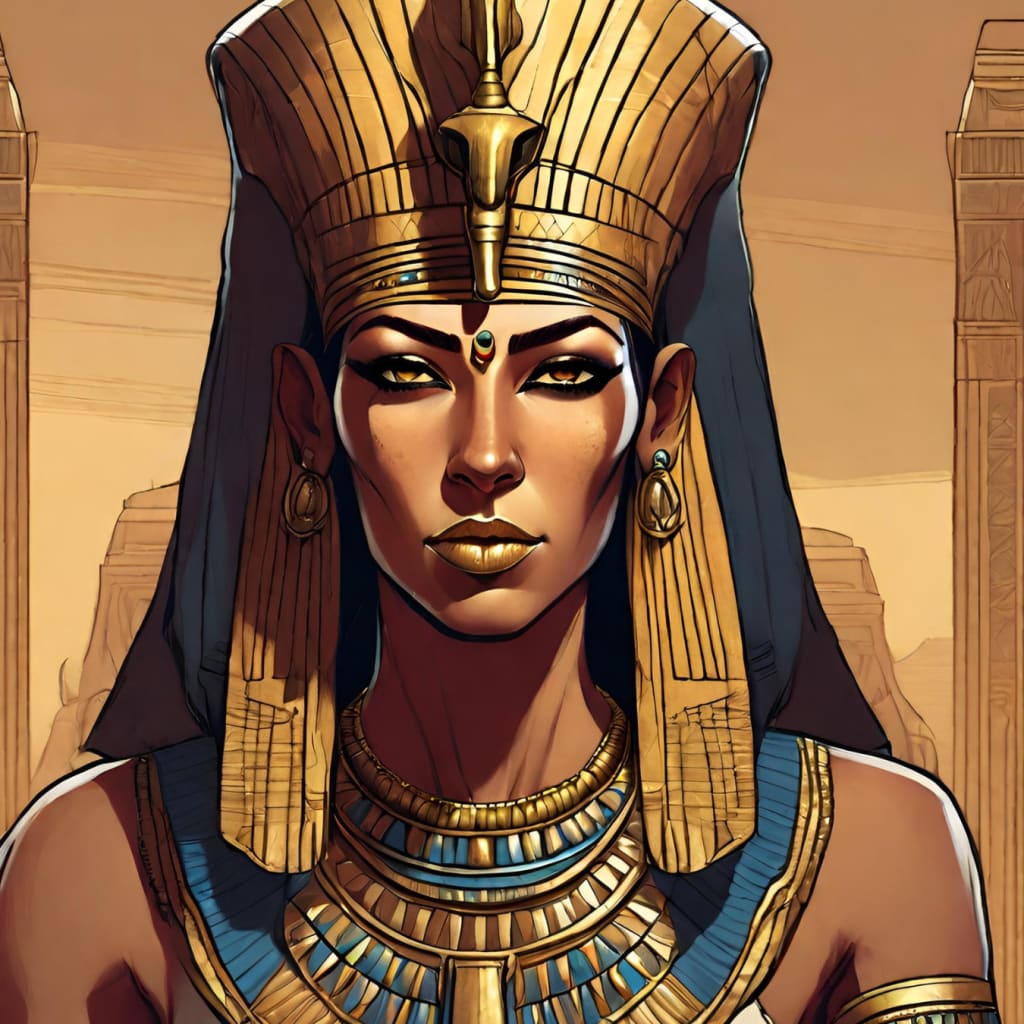Hatshepsut: The Queen Pharaoh of Egypt
Woman who shattered the glass ceiling of her time to become the queen pharaoh of a powerful kingdom

Hatshepsut, often described as one of the most remarkable figures in the history of ancient Egypt, was a woman who shattered the glass ceiling of her time to become the queen pharaoh of a powerful kingdom. Her reign marked a pivotal point in Egypt's history, characterized by prosperity, monumental architectural achievements, and a legacy that continues to captivate historians and enthusiasts today.
The Early Life of Hatshepsut:
Hatshepsut was born around 1507 BCE to Thutmose I and his queen, Ahmose. Her birth occurred during the early years of the Eighteenth Dynasty, a time of significant transformation for Egypt. As a princess, Hatshepsut received an education befitting her royal status, which included knowledge of administration and the intricacies of ruling.
The Unusual Path to the Throne:
Hatshepsut's path to the throne was anything but typical. When her father, Thutmose I, died, the crown passed to her half-brother, Thutmose II. After his death, her young nephew, Thutmose III, ascended to the throne. With Thutmose III too young to rule independently, Hatshepsut assumed the role of regent, ostensibly to guide him.
However, it was during her regency that Hatshepsut took the unprecedented step of declaring herself pharaoh. She adopted the full regalia of a male king, including the traditional pharaoh's kilt and false beard, and took the title of "Maatkare" (Truth is the Soul of the Sun God Re). Her decision to rule as pharaoh challenged the established norms of a male-dominated society, but it proved to be a pivotal moment in Egyptian history.
The Reign of Hatshepsut:
Hatshepsut's reign was characterized by an emphasis on peace, trade, and the promotion of art and culture. Her rule was marked by monumental building projects, including the famous Temple of Deir el-Bahri. This Temple was located on the west bank of the Nile River near Luxor in Egypt, is an architectural marvel and a significant historical site that stands as a testament to the grandeur of ancient Egyptian civilization. The temple is a three-tiered structure that ascends the cliffs of Deir el-Bahri in a semi-circular pattern. Its terraces are connected by ramps and colonnaded terraces, creating a stunning visual effect. The temple was designed by the architect Senenmut, who played a significant role in the reign of Hatshepsut.
One of her most renowned accomplishments was the launch of a trading expedition to the ancient land of Punt (modern-day Somalia), an endeavor that enhanced Egypt's access to valuable resources such as incense, myrrh, and exotic animals. This trade mission played a crucial role in Egypt's prosperity during her reign.
The Mystery of Hatshepsut's Legacy:
Despite her many achievements, Hatshepsut's legacy was somewhat tarnished by subsequent rulers. After her death, Thutmose III sought to erase her memory from official records and monuments. The reasons for this campaign are still debated by historians. Some speculate that it may have been due to resentment over her rule as a woman, while others suggest it was an attempt to maintain the legitimacy of his rule. Regardless, this led to a partial erasure of her name from many inscriptions and a temporary fading of her historical presence.
Rediscovery and Modern Appreciation:
Hatshepsut's legacy underwent a revival in the modern era. Her story, once nearly forgotten, was rediscovered, and she is now celebrated as one of ancient Egypt's most iconic and influential rulers. Historians have since pieced together her remarkable journey, and her image graces museums and history books worldwide.
In conclusion, Hatshepsut's reign is a testament to the power of determination and vision. As a female pharaoh in a time dominated by men, her achievements continue to inspire and serve as a symbol of the enduring strength and resilience of remarkable individuals throughout history. Hatshepsut stands as a true trailblazer who transcended societal norms to shape her own destiny and the future of a kingdom.
About the Creator
Noata Anavi
Reading is my way of time traveling! 🕰️ My heart is firmly anchored in ancient history, when I am not at the museum you'll find me cozied up with my beloved books 📚 each a doorway to another world. Join me on a journey through the ages!






Comments
There are no comments for this story
Be the first to respond and start the conversation.